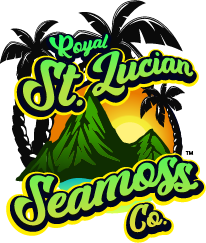St.Lucian Seamoss, also known as kappaphycus alvarezii, is a type of seaweed that has gained popularity in recent years due to its numerous health benefits. However, there is a common misconception that wildcrafted seamoss is superior to seamoss that has been farmed sustainably. In reality, both types of seamoss have their own set of advantages and disadvantages.
What is Wildcrafted Seamoss?
Wildcrafted seamoss refers to seamoss that is harvested from its natural habitat in the ocean. This type of seamoss is often considered to be more pure and nutrient-dense compared to farmed seamoss. While there is no evidence to support this. Proponents of wildcrafted seamoss believe that it is free from contaminants and pollutants that may be present in farmed varieties.
Why Sustainable Farming Matters
On the other hand, seamoss that is farmed sustainably is cultivated in controlled environments such as sea farms or aquaculture facilities. Sustainable farming practices ensure that the seamoss is grown in a way that minimizes environmental impact and promotes the long-term health of the ecosystem. This includes monitoring water quality, reducing waste, and supporting local communities.
The Benefits of Sustainable Farming
While wildcrafted seamoss may seem more natural, sustainable farming has its own set of benefits. For example, farmed seamoss can be harvested in a way that ensures a consistent supply year-round, reducing the pressure on wild populations. Additionally, sustainable farming practices can help support local economies and provide jobs in coastal communities.
Quality Control and Consistency
One of the key advantages of farmed seamoss is the ability to control the growing conditions, resulting in a more consistent product. This means that consumers can be assured of the quality and purity of the seamoss they are purchasing. In contrast, wildcrafted seamoss may vary in quality depending on where and how it was harvested.
Conclusion
In conclusion, both wildcrafted seamoss and seamoss that has been farmed sustainably have their own unique benefits. While wildcrafted seamoss may appeal to those seeking a more natural option, sustainable farming practices offer a reliable and environmentally friendly alternative. Ultimately, the choice between wildcrafted and farmed seamoss comes down to personal preference and priorities, whether it be purity, sustainability, or consistency.

